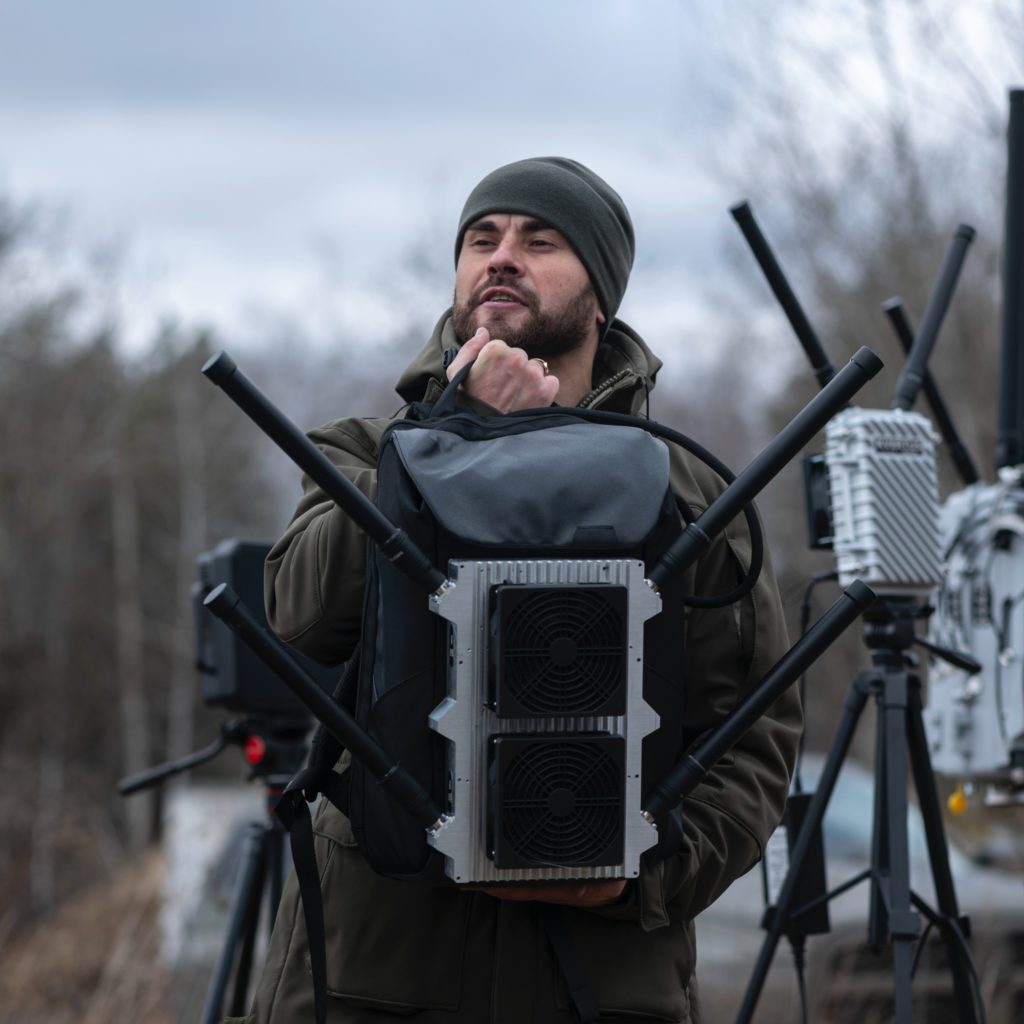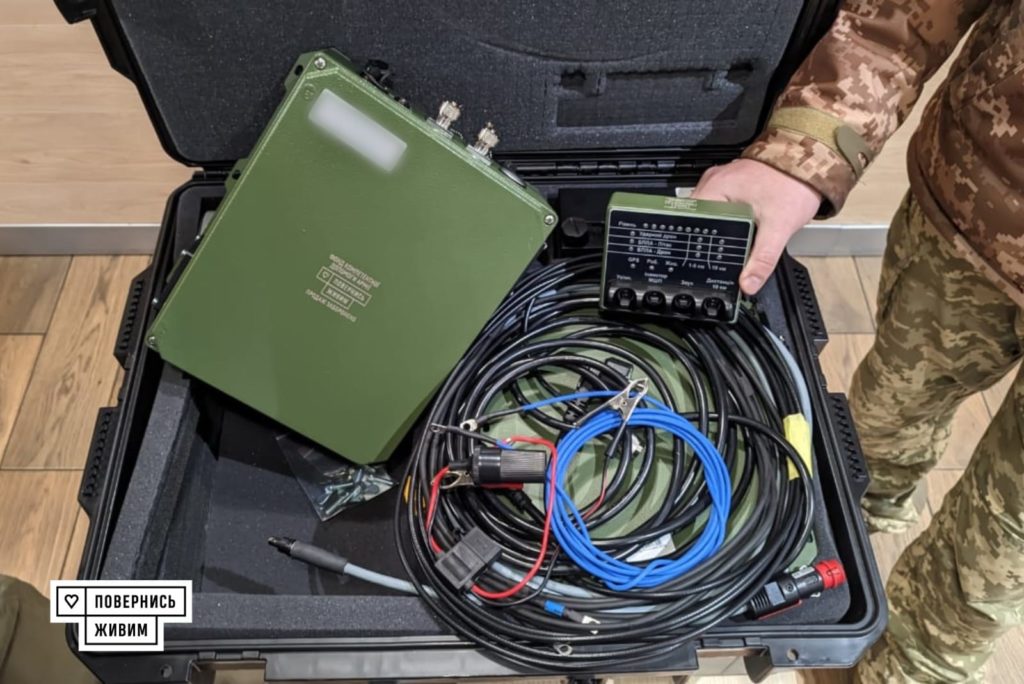The rise of FPV drones on the frontlines has revolutionized electronic warfare tactics, making the jamming of the drone-operator connection a crucial aspect of survival in modern combat. A key development is portable, personalized electronic warfare (EW) systems that troops can carry in vehicles or backpacks.
Ukraine and Russia are engaged in a race to manufacture advanced EW capabilities while seeking vulnerabilities in each other's systems, driving rapid innovation. Kvertus, a major Ukrainian EW manufacturer, reported supplying dozens of systems monthly in 2022, hundreds in 2023, and expects thousands in 2024, highlighting the exponential growth in demand.
However, to build a competitive EW market, Ukraine must accelerate development efforts by investing in research and development, fostering collaboration between manufacturers and military experts, and streamlining production processes.
Bohdan Miroshnychenko of Europeiska Pravda interviewed Ukrainian EW manufacturers to gain insights into the latest innovations, challenges, and opportunities facing the industry.
The frequency wars
FPV drones are vulnerable because operators must manually guide them, relying on a radio frequency link that can be jammed. EW aims to infiltrate and overpower these frequencies with powerful signals, forcing the drones to crash by losing control.
However, effective jamming depends on factors like the drone's sophistication, operator distance, jamming equipment quality, and being tuned to the right frequencies. Initially it was the 850-930 MHz range, but now, as Russian drones shift to new frequency ranges like 720-1020 MHz, jamming systems must adapt.
This technological cat-and-mouse drives both sides to transition faster to new frequencies, improve drone detection, widely field jamming tech, and train forces on it. Unique countermeasures have emerged, like Russia's 10km wired drone impervious to jamming, and machine vision drones that can strike targets autonomously after losing the control link.
To get ahead, Ukraine must develop a full suite of versatile, user-friendly, and technologically-advanced EW capabilities across the battlefield. Crucially, it needs to achieve mass production and drive down costs to supply the front lines with tens of thousands of these systems.
To catalyze military technology development, especially EW capabilities against Russian drones, Ukraine established the Brave1 state program. Its multipronged approach:
- Providing grants to developers.
- Helping military identify effective technologies.
- Creating an integrated industry platform linking all stakeholders.
- Facilitating interaction between developers and end-users.
- Delivering support for projects deemed critical for defense needs.
"Around 50 companies are currently developing counter-drone systems through Brave1 - from man-portable anti-drone rifles to larger area protection “domes”," said Oleh Donets, the program's EW lead.
To transition successful prototypes to mass production, new military systems must complete a codification process overseen by Ukraine's Defense Ministry. So far, nine mobile counter-drone models have achieved codification, with many more proceeding through the approval pipeline.
Ukrainian portable EW systems
Kvertus' innovative EW backpack system provides Ukrainian troops with a mobile counter-drone shield for just $7,000. Operating in the 720-1050 MHz range, it jams and disables threatening Russian drones.
Rather than individual use, the backpack protects entire small units of 8-10 soldiers on the move. One operator activates the system's protective dome spanning several hundred meters upon detecting an enemy drone. The rechargeable battery allows two hours of continuous electronic jamming.

Designed for maximum portability, the system fits inside a standard backpack worn on the operator's back. Only two low-profile antennas protrude, avoiding obstruction during maneuvers. Built-in ventilation prevents overheating that could degrade performance.
As Kvertus states: "The backpack safeguards small mobile teams during defensive, offensive, recon and evacuation operations by providing portable drone defense."
Ukrainian company Obrii Miltek has fielded a simple but effective counter-drone system - the portable ANTIFPV EW dome. At just $1,400 per unit, these affordable EW domes protect troops and vehicles within a 200m radius from Russian drone threats.
Two variants are currently in service:
- ANTIFPV BASE: A tripod-mounted version deployed at static defensive positions to safeguard personnel.
- ANTIFPV AUTO: Designed with four magnets for easy installation on military vehicles, providing mobile drone protection for convoys and maneuver forces.

While simple in design, the ANTIFPV's low cost and ease of manufacture allow widespread proliferation across front-line units.
As CEO Vadym Chukhrai stated, "It's not the pinnacle of technology, but this product can be made quickly at scale."
The Pluton system control panel, developed by Infozakhyst, is a state-of-the-art drone detection and warning system that can identify Russian drones within a radius of up to 70 kilometers. While it does not directly jam radio signals, the system can automatically activate electronic countermeasures when a threat is detected. Pluton is capable of detecting various types of drones, including FPV drones, attack drones, reconnaissance drones, and Mavic quadcopters, with its threat library constantly expanding.

Designed for use in command and observation posts and headquarters, the Pluton system is portable and can be deployed wherever needed.
According to Infozakhyst, "Currently, it detects most drones used by the Russians on the front lines, including commercial models as well as custom FPV drones and special military developments."
Although the Pluton control panel is more expensive than previous systems, with a cost of $45,000, it offers crucial drone detection and cueing capabilities for countermeasures. While not yet officially adopted by the military, the Pluton system is already being mass-produced for frontline units.
Ukraine's path to EW independence
Trending Now
Ukraine boasts over 100 electronic warfare (EW) designs, with Kvertus alone producing 22 models.
However, most of these systems currently rely on Chinese-made components like batteries, modules and amplifiers. While this doesn't compromise the quality of the products, as Chinese electronics are used worldwide, dependence on Beijing in weapons production could be detrimental to Ukraine.
"More and more key Chinese parts are being restricted, so we're localizing production," said Igor Fedirko, adviser at the Strategic Industries Ministry. "For example, Ukrainian manufacturers are also trying to localize the main Chinese component – the modules, assembling them in Ukraine using European microchips."
The primary requirement for an EW system is its ability to operate on relevant frequencies. Initially operating on standard 850-930 MHz, Russian forces now exploit the 720-1020 MHz range as well.
"65-70% of drones still use standard frequencies, but Russians are combining attacks across both bands," noted Kvertus co-founder Yaroslav Filimonov. "Our frontline troops need diverse, multi-band EW capabilities."
Manufacturers claim new systems covering the expanded frequencies are already in development, but questions remain over how quickly they can transition to mass production.
Ukraine also produces large EW systems to counter enemy missiles, Shahed drones, and reconnaissance UAVs. They can jam GPS signals or replace them with false ones, throwing the object off course.

"Even if a Shahed drone's channels are jammed, it continues to fly by inertia and can return to its course once it leaves the EW system's range. However, finding these drones intact in fields indicates that Ukrainian EW systems can successfully neutralize them by disrupting the navigation signal," the former spokesman of the Ukrainian Air Force, Yuriy Ihnat, explained.
Some well-known developments include Bukovel, Nota, and Pokrova, while others remain secret, mostly produced by private companies.
In addition to Ukrainian systems, Western EW equipment, usually provided free of charge, has supported Ukrainian troops in defending against drones since the beginning of the Russian invasion. However, the Ukrainian army is likely to prefer domestic products in the future.

Ukrainian EW systems are cheaper and battle-hardened. Developers constantly communicate with the military and refine new models based on their feedback. There are many nuances: enemy operating frequencies, ease of use, functionality to prevent friendly fire, and the ability to integrate with various systems on the front line.
Ukraine's EW market booms amid broad demand
The mobile EW systems market in Ukraine is relatively new but highly competitive, with numerous manufacturers and customers, including charitable foundations, the military, law enforcement agencies, cities, and private companies. In 2022, charitable foundations and businesses accounted for 80% of Kvertus company's sales, while in 2023, 85% of their systems were purchased by the state, military units, and communities.
Military units have been allocated 10% of the military personal income tax in 2024 for equipment purchases, amounting to $240 million for urgent procurement.
This has allowed the military to acquire equipment that has proven its effectiveness but has not yet undergone the codification procedure. Consequently, developers receive working capital before securing state contracts, and the military obtains the necessary equipment more quickly, as they no longer have to wait for the completion of the codification process.

However, direct military purchases also have drawbacks. Each unit requires a procurement specialist to ensure efficient fund utilization. Without proper oversight, some funds may remain unused. Moreover, the National Agency on Corruption Prevention has highlighted the risks of inefficient spending stemming from the absence of well-defined procurement regulations.
"EW systems are also ordered by Ukrainian cities. The mayor of the frontline Nikopol approached us, saying that Russians are training their FPV drone operators by striking civilian infrastructure. We were looking for a solution for them. We have similar cooperation with Lviv and Dnipro. Private companies also buy our systems to protect their facilities, needing only National Guard permission," said the Kvertus representative.
Since the beginning of the large-scale war, the EW market has been chaotic, with supplies coming from both large companies and garage masters, and few codified products with a quality mark from the Ministry of Defense. However, the market is evolving, with small teams uniting to create better products and manufacturers seeking to undergo the state codification procedure.
To ensure the market moves in the right technological direction and keeps pace with frontline trends, Ukraine must streamline the product codification process.
Additionally, increasing production volumes is crucial to address the shortage of EW systems at the front. Manufacturers of codified systems must receive large and long-term orders from the state to scale up production and meet the growing demand for these critical systems.
Read more:
- Ukraine develops new electronic warfare system to disrupt Russian drones
- Frontline report: Ukraine’s electronic warfare thwarts Russian aerial and ground advances in Avdiivka
- EW revolution: the US, China, and Europe closely observe Ukraine’s electronic warfare against Russian systems – NYT
- Ukraine deploys new electronic warfare systems to counter Russian airstrike tactics
- Ukrainian govt expedites production of electronic warfare equipment

